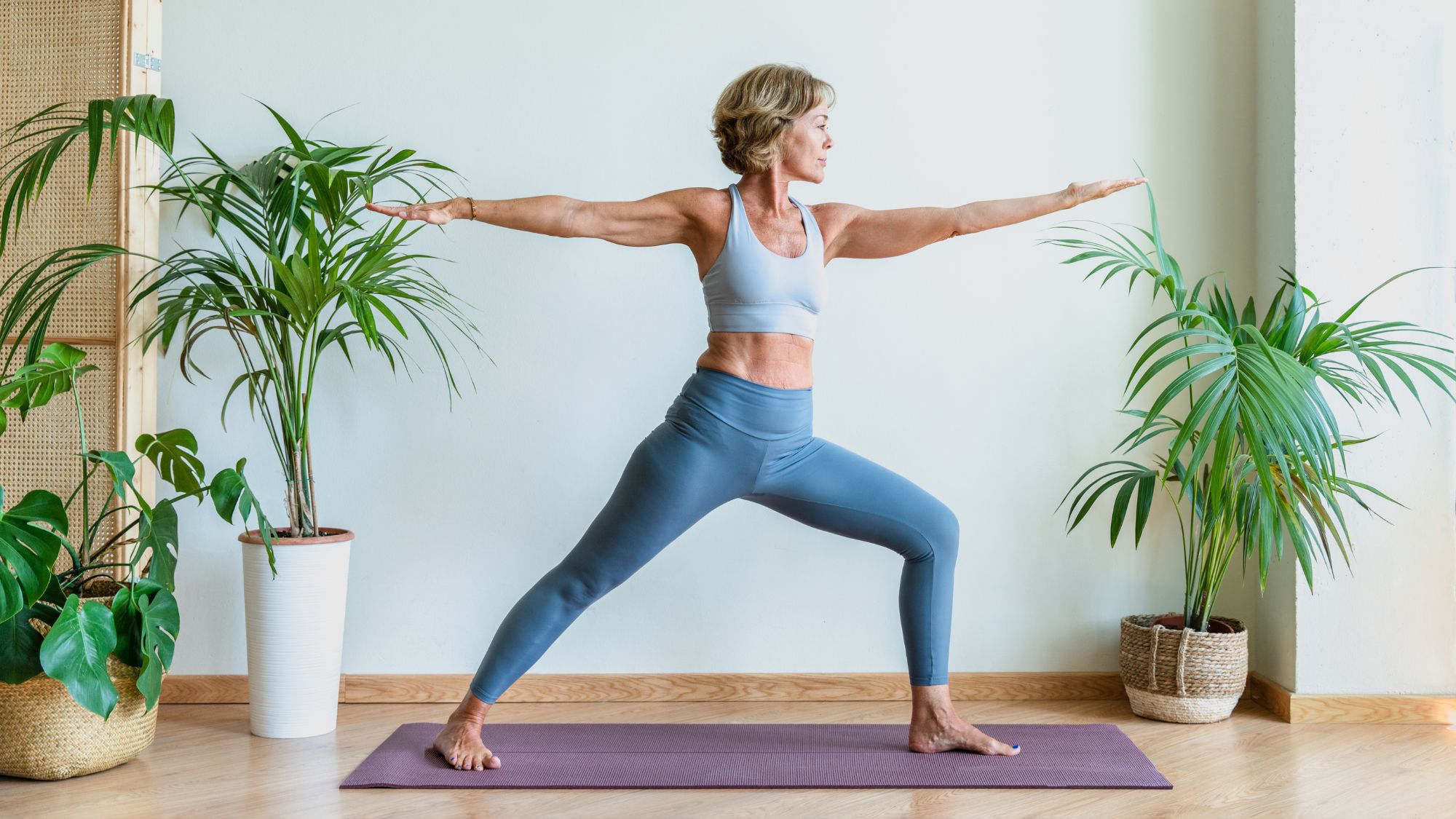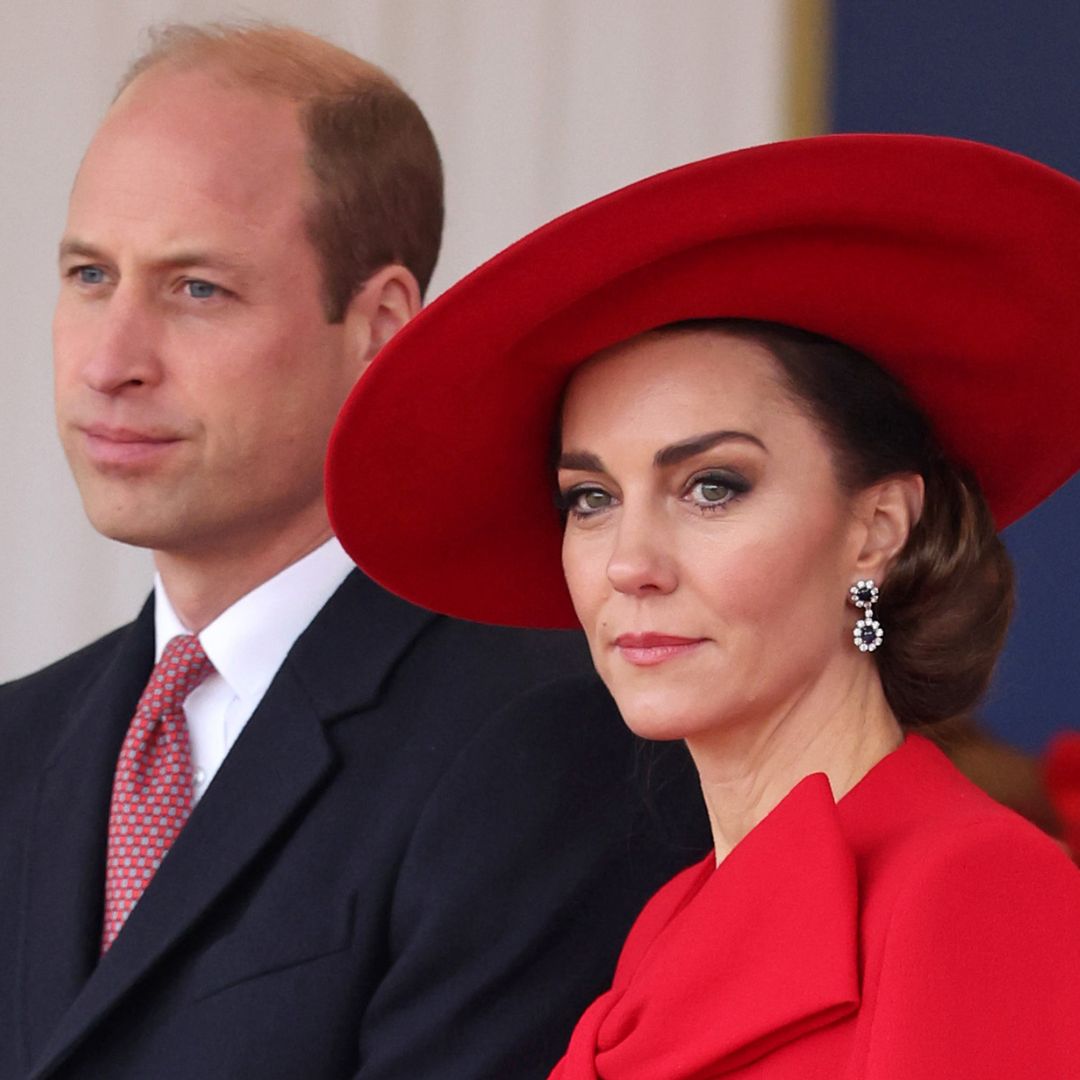This is exactly how to get fit - and stay fit - in your 50s, according to a top expert who trains clients every day
Your ultimate guide.

There are so many wellness tips, diets and lifestyle tweaks out there for women - especially at specific ages - that it can feel a bit overwhelming knowing where to start, right? Whether it's strength training to curb your metabolic rate slowing in your 30s, upping your intake of healthy fats in your 40s to improve bone density, or adopting yoga in your 50s to ease menopause symptoms, there's That's where this guide comes in - because if you've been wondering how to get fit in your 50s, we've asked a top expert for their tips.
Fun fact for you: it's totally normal for your body to change as you get older. Research has shown that your metabolic rate actually decreases at two per cent per decade which in turn impacts what foods and workouts might work best for your body.
Before we get into it, though, know this: there's no "best" way to workout or eat at any point in life. Rather, there's a way that works for you and your body - because as you probably well know, the only way you'll stick to a healthy lifestyle is by adopting both a diet and workout routine that you genuinely enjoy. Adopt what works for someone else and it'll simply become a chore.
So, what changes should you expect to see from your body if you're approaching - or already well into - your 50s? According to personal trainer and gym manager at Camberwell's PureGym Morgan Sangster, you typically enter into a peri-menopausal state between the ages of 45 to 50. This can result in several physical and mental changes as your hormone levels fluctuate at a similar rate to when teenagers go through puberty.
"The average woman goes through perimenopause around the age of 47 and it typically lasts around four years," shares the trainer. "That said, it can last anything from a year to ten years."
While symptoms span brain fog, hot flashes, insulin sensitivity, difficulty sleeping, and weight fluctuations, there are simple ways to adapt your training and lifestyle to counter these changes. Ready to feel your best self? Keep scrolling.
How to get fit in your 50s - and stay fit, too
1. Reconsider high impact exercise if you're tired
As you get older, you might experience more difficulty sleeping. This can be down to a number of factors - stress, a busy schedule, or a bad sleep environment - but also because, as you age, both your production of hormones and your ability to maintain your circadian rhythm fluctuates.
Marie Claire Newsletter
Celebrity news, beauty, fashion advice, and fascinating features, delivered straight to your inbox!
Sangster advises being mindful about your exercise on days where you've not banked enough sleep. Current NHS guidelines recommend aiming for seven to eight hours a night for optimal cognitive and physical health. Get less than that and the National Institute of Health warns that side effects could span difficulty focusing, irritability and general lethargy.
Apply this to your training and you essentially risk doing more harm than good if you throw yourself into a HIIT workout after minimal kip. "Difficulty sleeping will impact recovery, too, so you should be mindful of training at hard intensities," she shares.
2. That said, strength training is your friend
General NHS guidelines recommend that everyone aim for strength training workouts two to three times a week, that said, improving your muscle mass and lifting weights gets more important as you age.
Why? Simply because your metabolic rate declines as you age, meaning you need to workout a little more to reap the same rewards. It doesn't need to be all-encompassing or mean hours on the treadmill, though - Sangster advises working smarter rather than harder and opting for strength or resistance training, which will give you the most bang for your buck in the muscle-boosting department. As this National Institute for Ageing research points out, muscle is key, you see, for preventing injury, improving mobility, and in turn boosting independence. Not only that, but it affects your metabolism, how you process food, and how you store fat.
By strength or resistance training, you're increasing your amount of lean muscle mass, in turn improving your ability to fight illness, infection, stress and more. "This can be done with weights at home or in the gym," shares the trainer (home dumbbell workouts at the ready). "There is plenty of resistance equipment in gyms, including the likes of barbells and free weights, that said you can also get a good workout in from home with the right equipment."
3. Aim for a diet high in protein
And no, this doesn't mean protein shakes left, right and centre like your average gym bro. Rather, a focus on including a protein source with each snack and meal alongside fibre, carbohydrates and healthy fats. "Eating a high protein diet helps to maintain muscle mass and satiation," explains Sangster.
Wondering, how much protein do I need? Experts advise aiming for 1kg of protein per kg of bodyweight, which equates to around 70g per day for a 70kg woman. That said, you need more protein the more active you are. It's essential for muscle repair, with sports nutritionists advising a target of 1.2g to 1.4g per kilogram of body weight a day for the highly active (that's 84g to 98g of protein for a 70kg individual, FYI).
While the best course of action is to get your protein via food, if you'd rather supplement, our guide to the best protein powders for women will come in handy.
@tracysteen ♬ Stronger (What Doesn't Kill You) - Kelly Clarkson
4. Opt for whatever cardio you prefer
While cardio has been proven to be absolutely essential for optimal health - not only does it improve your sleep, but your heart health, blood pressure, immune system, and mood, too - Sangster stresses that it's important to figure out what type of cardio you most enjoy before committing to a workout programme. "Exercise helps maintain a healthy weight, relieves stress and improves your quality of life," highlights the trainer.
"While some form of weekly cardio in your 50s is advised to boost and maintain your cardiovascular health, it's important to workout what works for you," she shares. "This could be running outdoors, opting for a brisk paced walk on the treadmill in the gym, or trying cross-trainer, elliptical or spin bikes." Find the gym floor intimidating or overwhelming? "Classes are a fun way to start," shares the PT.
5. Try and drink two litres of water a day
Hydration is always important, but more so as you age for a number of reasons. According to the National Institute of Health, well-hydrated adults not only develop fewer chronic conditions but actually live longer, too.
Current NHS Eatwell guidelines recommend aiming to drink six to eight cups or glasses of fluid (around two litres) a day - and yes, they reckon that lower-fat milk and sugar-free drinks, including tea and coffee, all count.
6. Aim to hit 10k steps a day
Last but by no means least, walking is one of the simplest ways to boost your cardiovascular fitness, whatever your age. It's cost-effective, accessible, and low-risk injury-wise, meaning pretty much anyone can get involved.
So why in your 50s? Well, research has proven that not only does it boost heart health and reduce your risk of heart disease, but it's a great low impact workout, making it ideal for your 50s when high-impact sweat sessions could put too much stress and strain on your joints and result in pain or injury.
"Running strengthens your bones and prevents osteoporosis and osteoarthritis," shares the trainer. "An interesting fact, too: studies have shown that regular walking could halve the number of people over 45 who fracture their hip."

Ally Head is Marie Claire UK's Senior Health and Sustainability Editor, nine-time marathoner, and Boston Qualifying runner. Day-to-day, she heads up all strategy for her pillars, working across commissioning, features, and e-commerce, reporting on the latest health updates, writing the must-read wellness content, and rounding up the genuinely sustainable and squat-proof gym leggings worth *adding to basket*. She also spearheads the brand's annual Women in Sport covers, interviewing and shooting the likes of Mary Earps, Millie Bright, Daryll Neita, and Lavaia Nielsen. She's won a BSME for her sustainability work, regularly hosts panels and presents for events like the Sustainability Awards, and is a stickler for a strong stat, too, seeing over nine million total impressions on the January 2023 Wellness Issue she oversaw. Follow Ally on Instagram for more or get in touch.
-
 Penn Badgley credits ex girlfriend Blake Lively for "saving" him from the pitfalls of fame
Penn Badgley credits ex girlfriend Blake Lively for "saving" him from the pitfalls of fameBy Jenny Proudfoot
-
 Prince William and Princess Kate's Easter absence has reportedly "raised eyebrows at the palace"
Prince William and Princess Kate's Easter absence has reportedly "raised eyebrows at the palace"By Jenny Proudfoot
-
 This divisive Nineties trend just got a high-fashion makeover
This divisive Nineties trend just got a high-fashion makeoverAll the cool girls are wearing babydoll dresses again
By Sofia Piza